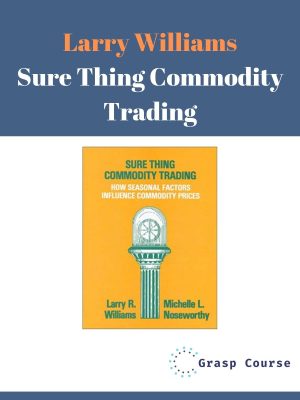Jim Kane – Complete Book Set
$700.00 Original price was: $700.00.$73.15Current price is: $73.15.
Fibonacci Trading Concepts is designed to help satisfy Critical Element number one of the ‘Plan for a Trade’, the Potential Trade Area (PTA). This book focuses on the use of Fibonacci numbers for determining potential areas of support and resistance
Jim Kane – Complete Book Set

Full book set and hard copy article package:
– Advanced Fibonacci Trading Concepts
– Entry Techniques -Trading ABCD Patterns -Trailing Stops
– Multiple Timeframes and ‘Context’
-Trade Management
– A Totally New 5-Point Pattern
– Four ‘New* ABCD Pattern Variations
– Median Line and Fibonacci Synergy
– The 4-Point Continuation Pattern
-A Pattern Trade Entry TechniqueAdvanced
Fibonacci Trading Concepts is designed to help satisfy Critical Element number one of the ‘Plan for a Trade’, the Potential Trade Area (PTA). This book focuses on the use of Fibonacci numbers for determining potential areas of support and resistance, where trades may be considered, using unique concepts developed at Kane Trading. Multiple new Fibonacci numbers are derived (including the now world-famous .886, from the person who quantified the number for the first time), and their use is detailed. The book goes on to develop the concept and technique of Fibonacci groupings, tight areas where multiple Fibonacci numbers come together to form a potential trade area. The concepts with regard to groupings are totally different than the ‘standard’ use of the basic Fibonacci numbers coming together in a “wide’ area, as presented by other authors. The techniques described in this book are based on totally new and unique ideas with regard to ‘harmonicity1 and the use and development of’layered support or resistance’. The latter term is not related in any way to the technique some authors present about trading a second, ‘wide’grouping if the first one fails. The layered support or resistance foundation, as well as the ‘harmonicity’ concepts, as defined in the Kane Trading methodology, are totally unique and were developed here at Kane Trading. In fact, the processes in this book can’t even be done without the multiple new Fibonacci-derived numbers that were developed for the first time anywhere here at Kane Trading. The entire process is laid out in step-by-step detail, with multiple examples. There is also a brief chapter on a possible relationship between some Gann numbers and Fibonacci numbers, as well as a very intriguing introductory chapter on Fibonacci time relationships.
Entry Techniques is designed to help satisfy Critical Element number two of the ‘Plan for a Trade’, the entry technique. Once a potential trade area is determined, the next step is to determine an entry technique. A key aspect of the Kane Trading methodology is the use of various timeframes, based on the ‘three timeframe’ philosophy (entry timeframe, traded timeframe, and ‘context1 timeframe), and all this is done without ‘indicators’. This use of various timeframes is one of the many ways that the material in this book differs from the ‘standard’ approach to entry techniques that is available from most sources. The methods for choosing the appropriate timeframe for applying the technique(s) are a critical aspect of the entire process. It’s not just the use of an entry technique that is emphasized; it’s the knowledge of what timeframe to apply the technique on that is so important to the understanding of this part of the Kane Trading methodology. There is a strong emphasis on timeframes throughout this book, with detailed discussion on how to choose the entry timeframe. Entry Techniques provides a vast assortment of potential entry triggers, and discussion on ways to vary them. Another large part of the Kane Trading philosophy is to encourage traders to test and experiment with techniques, and find what works for them and their particular Trading Plan’. This book outlines eight distinct techniques, with multiple variations, in order to provide a multiplicity of choices for the trader. The last chapter is based on a unique combination of entry triggers and timeframes developed at here at Kane Trading, and is entitled ‘A Cool Trick’.
Here’s What You’ll Get in Jim Kane – Complete Book Set

Jim Kane – Complete Book Set : Sample
Full book set and hard copy article package: – Advanced Fibonacci Trading Concepts – Entry Techniques – Trading ABCD Patterns – Trailing Stops – Multiple Timeframes and ‘Context’ – Trade Management – A Totally New 5-Point Pattern – Four ‘New’ ABCD Pattern Variations – Median Line and Fibonacci Synergy – The 4-Point Continuation Pattern – A Pattern Trade Entry TechniqueAdvanced
Detail: https://bestforexstore.com/product/complete-book-set-kanetrading-com/ – Best Forex Store, Trading, Stock Download Free
#Forex #ForexTrading #LibraryOfTrader
Full book set and hard copy article package: – Advanced Fibonacci Trading Concepts – Entry Techniques – Trading ABCD Patterns – Trailing Stops – Multiple Timeframes and ‘Context’ – Trade Management – A Totally New 5-Point Pattern – Four ‘New’ ABCD Pattern Variations – Median Line and Fibonacci Synergy – The 4-Point Continuation Pattern – A Pattern Trade Entry TechniqueAdvanced Fibonacci Trading Concepts is designed to help satisfy Critical Element number one of the ‘Plan for a Trade’, the Potential Trade Area (PTA). This book focuses on the use of Fibonacci numbers for determining potential areas of support and resistance, where trades may be considered, using unique concepts developed at Kane Trading. Multiple new Fibonacci numbers are derived (including the now world-famous .886, from the person who quantified the number for the first time), and their use is detailed. The book goes on to develop the concept and technique of Fibonacci groupings, tight areas where multiple Fibonacci numbers come together to form a potential trade area. The concepts with regard to groupings are totally different than the ‘standard’ use of the basic Fibonacci numbers coming together in a ‘wide’ area, as presented by other authors. The techniques described in this book are based on totally new and unique ideas with regard to ‘harmonicity’ and the use and development of ‘layered support or resistance’. The latter term is not related in any way to the technique some authors present about trading a second, ‘wide’ grouping if the first one fails. The layered support or resistance foundation, as well as the ‘harmonicity’ concepts, as defined in the Kane Trading methodology, are totally unique and were developed here at Kane Trading. In fact, the processes in this book can’t even be done without the multiple new Fibonacci-derived numbers that were developed for the first time anywhere here at Kane Trading. The entire process is laid out in step-by-step detail, with multiple examples. There is also a brief chapter on a possible relationship between some Gann numbers and Fibonacci numbers, as well as a very intriguing introductory chapter on Fibonacci time relationships. Entry Techniques is designed to help satisfy Critical Element number two of the ‘Plan for a Trade’, the entry technique. Once a potential trade area is determined, the next step is to determine an entry technique. A key aspect of the Kane Trading methodology is the use of various timeframes, based on the ‘three timeframe’ philosophy (entry timeframe, traded timeframe, and ‘context’ timeframe), and all this is done without ‘indicators’. This use of various timeframes is one of the many ways that the material in this book differs from the ‘standard’ approach to entry techniques that is available from most sources. The methods for choosing the appropriate timeframe for applying the technique(s) are a critical aspect of the entire process. It’s not just the use of an entry technique that is emphasized; it’s the knowledge of what timeframe to apply the technique on that is so important to the understanding of this part of the Kane Trading methodology. There is a strong emphasis on timeframes throughout this book, with detailed discussion on how to choose the entry timeframe. Entry Techniques provides a vast assortment of potential entry triggers, and discussion on ways to vary them. Another large part of the Kane Trading philosophy is to encourage traders to test and experiment with techniques, and find what works for them and their particular ‘Trading Plan’. This book outlines eight distinct techniques, with multiple variations, in order to provide a multiplicity of choices for the trader. The last chapter is based on a unique combination of entry triggers and timeframes developed at here at Kane Trading, and is entitled ‘A Cool Trick’.See more at https://www.kanetrading.com/books/books.html#ts Get Jim Kane – Complete Book Set (kanetrading.com) on bestforexstore.com Jim Kane, Complete Book Set (kanetrading.com), Download Complete Book Set (kanetrading.com), Free Complete Book Set (kanetrading.com), Complete Book Set (kanetrading.com) Torrent, Complete Book Set (kanetrading.com) Review, Complete Book Set (kanetrading.com) Groupbuy.
Full book set and hard copy article package: – Advanced Fibonacci Trading Concepts – Entry Techniques – Trading ABCD Patterns – Trailing Stops – Multiple Timeframes and ‘Context’ – Trade Management – A Totally New 5-Point Pattern – Four ‘New’ ABCD Pattern Variations – Median Line and Fibonacci Synergy – The 4-Point Continuation Pattern – A Pattern Trade Entry TechniqueAdvanced Fibonacci Trading Concepts is designed to help satisfy Critical Element number one of the ‘Plan for a Trade’, the Potential Trade Area (PTA). This book focuses on the use of Fibonacci numbers for determining potential areas of support and resistance, where trades may be considered, using unique concepts developed at Kane Trading. Multiple new Fibonacci numbers are derived (including the now world-famous .886, from the person who quantified the number for the first time), and their use is detailed. The book goes on to develop the concept and technique of Fibonacci groupings, tight areas where multiple Fibonacci numbers come together to form a potential trade area. The concepts with regard to groupings are totally different than the ‘standard’ use of the basic Fibonacci numbers coming together in a ‘wide’ area, as presented by other authors. The techniques described in this book are based on totally new and unique ideas with regard to ‘harmonicity’ and the use and development of ‘layered support or resistance’. The latter term is not related in any way to the technique some authors present about trading a second, ‘wide’ grouping if the first one fails. The layered support or resistance foundation, as well as the ‘harmonicity’ concepts, as defined in the Kane Trading methodology, are totally unique and were developed here at Kane Trading. In fact, the processes in this book can’t even be done without the multiple new Fibonacci-derived numbers that were developed for the first time anywhere here at Kane Trading. The entire process is laid out in step-by-step detail, with multiple examples. There is also a brief chapter on a possible relationship between some Gann numbers and Fibonacci numbers, as well as a very intriguing introductory chapter on Fibonacci time relationships. Entry Techniques is designed to help satisfy Critical Element number two of the ‘Plan for a Trade’, the entry technique. Once a potential trade area is determined, the next step is to determine an entry technique. A key aspect of the Kane Trading methodology is the use of various timeframes, based on the ‘three timeframe’ philosophy (entry timeframe, traded timeframe, and ‘context’ timeframe), and all this is done without ‘indicators’. This use of various timeframes is one of the many ways that the material in this book differs from the ‘standard’ approach to entry techniques that is available from most sources. The methods for choosing the appropriate timeframe for applying the technique(s) are a critical aspect of the entire process. It’s not just the use of an entry technique that is emphasized; it’s the knowledge of what timeframe to apply the technique on that is so important to the understanding of this part of the Kane Trading methodology. There is a strong emphasis on timeframes throughout this book, with detailed discussion on how to choose the entry timeframe. Entry Techniques provides a vast assortment of potential entry triggers, and discussion on ways to vary them. Another large part of the Kane Trading philosophy is to encourage traders to test and experiment with techniques, and find what works for them and their particular ‘Trading Plan’. This book outlines eight distinct techniques, with multiple variations, in order to provide a multiplicity of choices for the trader. The last chapter is based on a unique combination of entry triggers and timeframes developed at here at Kane Trading, and is entitled ‘A Cool Trick’.
Be the first to review “Jim Kane – Complete Book Set” Cancel reply
Related products
Stock Forex Options - Trading
Stock Forex Options - Trading
Stock Forex Options - Trading
Stock Forex Options - Trading
Stock Forex Options - Trading
Stock Forex Options - Trading
Stock Forex Options - Trading
Stock Forex Options - Trading
Anton Kreil – Professional Options Trading Masterclass (POTM)




![Oil Trading Academy - Code 1 + 2 + 3 [Video Course]](https://graspcourse.net/wp-content/uploads/2019/07/Oil-Trading-Academy-Code-1-2-3-Video-Course-300x400.jpg)







Reviews
There are no reviews yet.